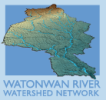Action
In an effort to better understand community perspectives around water and watershed health, project staff and local conservation partners conducted over 50 interviews and focus groups across the watershed during 2015 to 2017.
A group of citizens and conservation partners from across the watershed met over a series of eight meetings in 2017-2018. The advisory committee talked about the watershed, resident concerns, scientific findings and explored the question: Are there some leverage points that might lead to more conservation adoption across the watershed? The group brainstormed strategies to improve watershed health by accelerating conservation adoption. Their priority actions are listed below. Learn more by viewing a video about the group process or by viewing the summary report: Watonwan River Watershed Leverage Points for More Conservation Adoption.
More Conservation Outreach
Find funding for a “Conservation Consultant” staff position to focus on one-on-one outreach with residents. Create a “Traveling Conservation Circus”—a trailer that has information about best management practices (BMPs), the watershed, a rainfall simulator and soil testing equipment. Conservation partners will travel across the watershed and host events on farms and in big and small towns.
Clarify Barriers to Conservation Adoption
Explain watershed residents and local partner needs and barriers. The group identified the lack of engineering services available, the need for staff stability and funds for staff training.
Target Conservation with GIS Mapping
Use a more systematic approach to target conservation and identify high priority areas. Use Geographic Information System (GIS) mapping programs to create targeted maps at field and/or subwatershed scale.
Clarify Economics
Explain the economics of BMPs and clarify costs for landowners. Explain how conservation practices and soil health practices can make farming easier and less stressful.
Promote Soil Health
Form a Soil Health Team (like in Freeborn and Faribault Counties) to support the use of cover crops, reduced tillage and to increase soil organic matter. Actions that increase soil health also help the land absorb more water during heavy rains.
Focus on Marginal Lands
Learn from scenario-based economic analysis programs (like Profit Zone Manager) to help clarify the long term economics of farming marginal ground. What will it take to set these lands aside? Get the message out: “Don’t farm lands that don’t pay; square off the fields.”
Get more Water Storage on Ditch Improvements
Map and identify upcoming ditch improvement projects and see if it is possible to get more water storage as part of the improvement process.
LEARN MORE
To learn more about citizen perspectives, see “Research” tab.
